Time Machine
FIFTY YEARS OF BELGRADE ”MARAKANA”, THE BIGGEST SPORTS STADIUM
Powerful Energy Flowing Through You
For half a century, more than 25 million people supported ”Zvezda” in this stadium, at more than 1.100 official matches. 19 state titles were won there and as many national cups, European Champions Cup and International Cup. The most visited game was on April 23, 1975, at the match with ”Ferenzvaros”, with, unofficially, over 110.000 spectators. The stadium was equipped with reflectors in 1973 and the roof above the west stand was made in 1977. Now it’s waiting for better times to revive its old glory
By: Dejan Bulajić
Photo: Archives of ”Zvezda” and ”National Review”
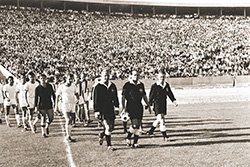 The story of the biggest Serbian stadium, home of the ”Crvena Zvezda” (”Red Star”) football club, officially named after the club, but unofficially named ”Marakana” by the fans because of its size, began on December 27, 1959, when the Red and Whites played the last game in their old stadium. It was built in 1927 and belonged to the popular ”Yugoslavia” club, which cultivated many famous football players, the most remarkable among them being Moša Marjanović. The stadium reminded of that era, although it had 20.000 places for standing. The stands were made of wood, so was the fence, often coated with tar to discourage spectators without tickets to jump over it. The field was mostly covered with slag, except for the corners which had grass. Dragoslav Šekularac, legend of this football club, still has vivid memories of that time. The story of the biggest Serbian stadium, home of the ”Crvena Zvezda” (”Red Star”) football club, officially named after the club, but unofficially named ”Marakana” by the fans because of its size, began on December 27, 1959, when the Red and Whites played the last game in their old stadium. It was built in 1927 and belonged to the popular ”Yugoslavia” club, which cultivated many famous football players, the most remarkable among them being Moša Marjanović. The stadium reminded of that era, although it had 20.000 places for standing. The stands were made of wood, so was the fence, often coated with tar to discourage spectators without tickets to jump over it. The field was mostly covered with slag, except for the corners which had grass. Dragoslav Šekularac, legend of this football club, still has vivid memories of that time.
– The slag was a big problem, so we played international matches at the JNA Stadium. You cannot move well on the slag and when you fall, you scratch your entire body. I think that even today I have stains on my body, because it came under my skin. I remember Dule the Frog who worked at the stadium and had to water the field all day long, but it wasn’t of much use. Later they placed grass in the corners, which was ridiculous because the rest of the field was still covered with slag.
 During World War II, ”Yugoslavia” FC was shut down. Soon after liberation, on March 4, 1945, ”Crvena Zvezda” was founded and given this stadium. It soon became clear that a real football giant of new Yugoslavia is growing in it. Besides, ”Zvezda” played 36 games and won 30 victories in the year it was founded, with only one defeat, against Romania in Timisoara. During World War II, ”Yugoslavia” FC was shut down. Soon after liberation, on March 4, 1945, ”Crvena Zvezda” was founded and given this stadium. It soon became clear that a real football giant of new Yugoslavia is growing in it. Besides, ”Zvezda” played 36 games and won 30 victories in the year it was founded, with only one defeat, against Romania in Timisoara.
It didn’t wait long for titles. Already in 1948, ”Zvezda” won the first National Cup, by winning ”Partizan” in the finals 3:0. The first champion title came in 1951, when it caught up with ”Dinamo” from Zagreb in the three final rounds. The fans almost burned down the stadium, because they lit newspaper on the stands to celebrate the title and then carried players on their shoulders through the streets of Belgrade.
”Zvezda” was becoming a serious club with growing popularity, so the necessity of a new stadium grew as well. Finally, the last game in the old stadium was played at the end of 1959 against ”Novi Sad”. After that game, the old stadium was destroyed and the building of a new one began in the same place.
FAMOUS HOLE IN DEDINJE
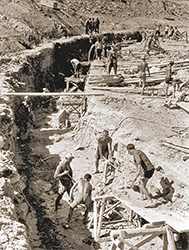 It took three hundred million dinars to turn the design of architect Kosta Popović into reality, which was big money at the time. The fans also gave their contribution by buying the so-called bricks, 20-dinar coupons, sold in popular places in Belgrade. It’s interesting that players, including Dragoslav Šekularac, were also selling the bricks. It took three hundred million dinars to turn the design of architect Kosta Popović into reality, which was big money at the time. The fans also gave their contribution by buying the so-called bricks, 20-dinar coupons, sold in popular places in Belgrade. It’s interesting that players, including Dragoslav Šekularac, were also selling the bricks.
– I believe I won’t be mistaken if I say that at the time I was as popular as Novak Đoković is today. As such, I was perfect for selling bricks, not only to common fans, who bought them according to their abilities, some one, some more, but also to people in high places, directors of state-owned companies. Nobody could refuse me back then, so we collected a big amount of money. I believe that the players brought ”Zvezda” millions of dinars by selling bricks. The then management provided the rest, especially Krcun Penezić, who was very influential in the country at the time. I remember, however, that after his death, the club management was on shaky legs and that late Aca Obradović had a very difficult time.
The old stadium was torn down, even its foundations were dug out, because the new field was supposed to be 12 meters lower than the old one. In order to achieve that, 350.000 cubic meters of soil and 15.000 cubic meters of rock was supposed to be dug out. Such a project was justified, because the soil in Dedinje was susceptible to landslides. Fans of opponent clubs, especially ”Partizan”, pejoratively called ”Zvezda’s” stadium ”the hole” because of the level of the field. The expression was, however, later accepted by the players as well, who claimed that the atmosphere in Belgrade ”Marakana” cannot be compared with any other European stadium. Especially important was placing an excellent grass surface with a draining system, in accordance with the most up to date trends in sports architecture.
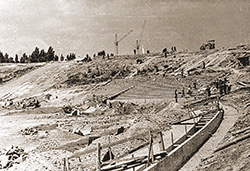 Finally, on September 1, 1963, the first game was played in the new, although unfinished stadium, which was missing the west stand. ”Rijeka” had the honor to play against ”Zvezda” on that day, in the third round of the state championship. With 55.000 spectators, the team was composed of: Ćosić, Milićević, Tomić, Čop, Vasović, Popović, Melić, Prlinčević, Kostić, Maravić and Džajić, led by coach Miša Pavić. The first first-league goal of the Red and Whites on the new stadium was scored by Dušan Maravić. Finally, on September 1, 1963, the first game was played in the new, although unfinished stadium, which was missing the west stand. ”Rijeka” had the honor to play against ”Zvezda” on that day, in the third round of the state championship. With 55.000 spectators, the team was composed of: Ćosić, Milićević, Tomić, Čop, Vasović, Popović, Melić, Prlinčević, Kostić, Maravić and Džajić, led by coach Miša Pavić. The first first-league goal of the Red and Whites on the new stadium was scored by Dušan Maravić.
– I remember the day was sunny and there were more spectators then ever. We came from a kind of quarantine, which we had on Fridays if we were hosting games, most often in ”Čarapića Brest”, or top of Avala. The locker rooms were in the place where west stands are today, so we went through a passageway into the field, which was as flat as a pool table. It was a pleasure to see it, let alone play in it. ”Rijeka” was always a tough opponent. Although they had one player less from the thirtieth minute, they scored first with Vukoje’s goal in the middle of the second half. It didn’t unhinge us because we wanted victory more than anything else. About ten minutes before the end, I took the ball about twenty-odd meters towards the south stands, it touched Vranković and fooled Jantoljak, who would, if it weren’t for that, defend the goal easily. The stadium exploded. Five minutes later, Vasović, who played with us in that season due to some misunderstanding in ”Partizan”, took the ball in our penalty area, passed almost the entire field and passed it on to Prlinčević, who scored the second goal. Then the real commotion began.
THE PLACE IS A PHENOMENON
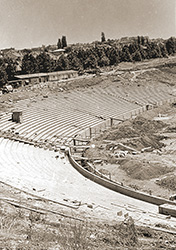 The opening of the new stadium brought luck to ”Zvezda” because that year, after three years of ”Partizan” in the lead, it won its seventh champion title. The celebration was even bigger after winning the Cup, the second double crown for the Red and Whites. The opening of the new stadium brought luck to ”Zvezda” because that year, after three years of ”Partizan” in the lead, it won its seventh champion title. The celebration was even bigger after winning the Cup, the second double crown for the Red and Whites.
Many still remember the game with ”Real” Madrid in the quarter-finals of the European Champions Cup, on March 4, 1987. There were 105.000 fans on the stands, and the Red and Whites celebrated their 42nd birthday in the best possible way, by winning 4:2.
It is assumed that the same number of fans supported them in the European Champions Cup semifinals on April 14, 1971, when they won against ”Panathinaikos” 4:1. It was certainly the biggest match in the club’s history up to then, with 93.500 tickets sold, but according to unofficial estimations, 105.000 fans on the stands.
The first European finals ”Zvezda” played was on May 9, 1979 in the UEFA Cup, against ”Borussia” Mönchengladbach, which ended with 1:1. According to newspaper reports, there were about 100.000 spectators, although 87.500 tickets were sold. That year, ”Zvezda” was shining in the UEFA Cup, leaving behind famous names of European football, and in the match against ”West Bromwich Albion” Dušan Savić scored a brilliant free kick for a 1:0 victory. While celebrating the goal, a signal rocket fired from the west stand flew over his head.
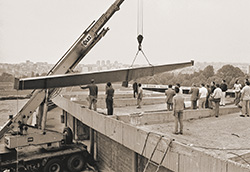 – I didn’t notice it in the field. Only after, while watching the recording, I saw something fly over my head. It was a moment when all blockades in a human break, when you give way to delight. The atmosphere in the stadium was magnificent, many fans, deafening noise. All that seems unreal, you feel a powerful energy flowing through you. I played in many stadiums around the world and was present in wonderful atmospheres, but I claim that ”Marakana” has something none of them have. Perhaps it is because it’s dug into the earth and there is a strange feeling of unity between the players and the fans. Many famous clubs and brilliant players were our guests and it was never easy for them to play in such an atmosphere. You could even see fear on faces of some of them. Now the capacity is halved and there are no important games we had before. However, even today, red and white ”Marakana” is a unique phenomenon. – I didn’t notice it in the field. Only after, while watching the recording, I saw something fly over my head. It was a moment when all blockades in a human break, when you give way to delight. The atmosphere in the stadium was magnificent, many fans, deafening noise. All that seems unreal, you feel a powerful energy flowing through you. I played in many stadiums around the world and was present in wonderful atmospheres, but I claim that ”Marakana” has something none of them have. Perhaps it is because it’s dug into the earth and there is a strange feeling of unity between the players and the fans. Many famous clubs and brilliant players were our guests and it was never easy for them to play in such an atmosphere. You could even see fear on faces of some of them. Now the capacity is halved and there are no important games we had before. However, even today, red and white ”Marakana” is a unique phenomenon.
THE NIGHT ”BAYERN” FELL
The most visited match between local clubs was in November 1976. ”Zvezda” played against ”Partizan” before 90.142 spectators, won with the goal of Zoran Filipović and later won the champion title.
– The feeling after scoring a goal in such a game is unbelievable – says Filipović. – The roar from the stands carries you away and you feel like flying. Perhaps it’s because the field is so low, the echo of the noise is stronger, it spreads to all sides. I think it’s the impression of both players in the field and fans. Being on the stands of ”Marakana” is not the same as being on the stands of another, even larger stadium. Everything that happens, from cheering to raised spirits and forceful energy, seems to remain above the field and exists simultaneously with the match. It carries you and gives you strength. It is the imperishable characteristic of ”Zvezda’s” stadium.
The most important game ”Zvezda” played in its stadium was on April 24, 1991, in the semifinals of the European Champions Cup against ”Bayern”, when it equaled the result at the very end of the game to 2:2, enough for entering the finals. One of the players in that unforgettable match was Dragiša Binić:
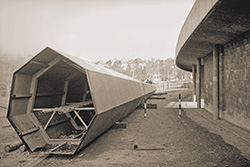 – The match against ”Bayern” was a true miracle. We had 2:1 from the first match, we played the first half excellently and ended it with 1:0. The stadium was trembling while Miha was running towards the north stand after scoring the goal. However, in the second half they scored an easy goal and everything stopped. As if we were lost. The Germans took over the lead, the stadium was struck dumb and the audience became frightened. Then God turned to us. It was a moment when a second lasts eternally. When Miha kicked into the center and Augentaler chipped the ball, the stands became completely silent. We heard: ”It’s coming!” Pančev and I were standing in front of goalkeeper Auman. He moved, then stopped, let the ball fly over him and then sent it into the net. I cannot describe what came afterwards. As if something raised the stadium from the ground. Everything was shaking in terrible noise. The referee soon called the end of the game and nothing could prevent the audience from running into the field. They were so delighted that they took off our dresses, knocked down the posts, took the sods. That night, like never before, the most beautiful parts of ”Zvezda” united – players, fans, red and white and the stadium shining with a champion’s glow. – The match against ”Bayern” was a true miracle. We had 2:1 from the first match, we played the first half excellently and ended it with 1:0. The stadium was trembling while Miha was running towards the north stand after scoring the goal. However, in the second half they scored an easy goal and everything stopped. As if we were lost. The Germans took over the lead, the stadium was struck dumb and the audience became frightened. Then God turned to us. It was a moment when a second lasts eternally. When Miha kicked into the center and Augentaler chipped the ball, the stands became completely silent. We heard: ”It’s coming!” Pančev and I were standing in front of goalkeeper Auman. He moved, then stopped, let the ball fly over him and then sent it into the net. I cannot describe what came afterwards. As if something raised the stadium from the ground. Everything was shaking in terrible noise. The referee soon called the end of the game and nothing could prevent the audience from running into the field. They were so delighted that they took off our dresses, knocked down the posts, took the sods. That night, like never before, the most beautiful parts of ”Zvezda” united – players, fans, red and white and the stadium shining with a champion’s glow.
Unfortunately, such moments have never happened again. After the exile from the European scene during the nineties, which had nothing to do with sports, ”Zvezda” never succeeded in regaining its past glory, so everything was reduced to not so successful fighting for local trophies. Together with this, the profile of fans changed, even the atmosphere at the stands, but this has become a global feature, not only one of Serbian stadiums. Still, this will not take away the status of red and white ”Marakana” as a legendary place, where passionate spirits of both players and fans mixed together, whose field still holds, as a deep layer of time, contours of euphoria and anger, the noisy witnesses of victories and defeats. It is waiting for some better times to revive the past glory.
ARENA AND MUSEUM
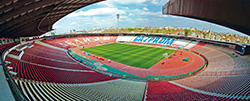 During the past five decades, 25 million people supported ”Zvezda” in the ”Marakana” in more than 1.100 official matches. The Red and Whites were state champions 19 times and had as much triumphs in the National Cup, along with the title of European and Intercontinental Champion. During the past five decades, 25 million people supported ”Zvezda” in the ”Marakana” in more than 1.100 official matches. The Red and Whites were state champions 19 times and had as much triumphs in the National Cup, along with the title of European and Intercontinental Champion.
However, not only ”Zvezda’s” players played in ”Marakana”. We should remember the finals of the European Champions Cup in 1973, when ”Ajax” defeated ”Juventus” with 1:0, thus becoming champion of Europe for the third time in a row. There were 91.564 spectators at the match.
”Zvezda’s” stadium was also the battlefield of the European Championship finals on June 20, 1976, when Czech Republic defeated Germany in penalty kicks with 5:3 (2:2 in the regular course of the game). The match will be remembered for Antonin Panenka’s crucial penalty, when he chipped the ball straight into the middle of the net, behind the back of famous Sepp Maier.
Together with score-wise tops and bottoms, the works on modernizing the stadium continued. Thus on September 23, 1973, the first international game under reflectors was played. The friendly match with ”Benfika”, with 71.476 spectators in the stands, ended with the victory of the Portuguese. The offices on the west stand were completed the same year, while the athletic track has been in use since 1970 and renovated in 2009 for the Universiade. The roof on the west stand was placed in July 1977, when the stadium got its present appearance, with minor corrections.
Following the modernization of football objects and abiding to the UEFA requests, intending to provide a more convenient and safer stadium for spectators, the number of places in the stadium significantly decreased. By putting seats in all four stands, the stadium’s capacity decreased to 53.000 seats.
Reporters have their place in the up to date media center and loge with 344 seats, with seven special press cabins and good conditions for TV and radio broadcasts.
Very attractive is ”Zvezda’s” Museum, which integrated the rich history of the club. There are more than 1.400 exhibits in 400 square meters (trophies, plaques, pictures, etc.), which make one of the most beautiful sports collections in the world.
***
Debuts
The first goal for ”Zvezda” in the new stadium wasn’t however scored by Dušan Maravić against ”Rijeka”. In the foreplay match of ”Zvezda’s” pioneers against ”Jedinstvo” Zemun, Trifun Mihajlović scored the first goal in ”Marakana” and already the following year became member of the first team. Furthermore, the first fan who entered the new stadium was Laza Petrović, peasant from a village near Loznica.
***
All 110.000 Fans
The capacity of the stadium in the first year was 55.000, while the following year, after its completion, it was able to host 110.000 fans! The most visited game was on April 23, 1975, the rematch against Hungarian ”Ferenzvaros” in the semifinals of the Cup Winners’ Cup. Precise data state that 96.070 tickets were sold, however witnesses claim that there were more than 110.000 fans in the stands. Unfortunately, the game ended with 2:2, which wasn’t enough to annul the defeat of 2:1 from the first match.
***
The Most Beautiful Moment
– The most beautiful moment in ”Marakana” is certainly my first derby against ”Partizan” on October 27, 1974, which we won 3:1 – says Dušan Savić. – As a debut player, less than twenty years old, I scored the first goal. Such a feeling cannot be compared with anything else. Then I saw the real meaning of ”Zvezda’s” stadium. We also played against stronger rivals, but when the cheering starts you feel you could do anything, let alone how it influences the opponent. That derby remained in my memory. I thought that all my dreams have already come true.
***
Big and Small Loges
The central ”Five ’Zvezda’s’ Stars” loge was built on the west stand. It has five segments, each of them named after one of the legendary players of ”Zvezda” (Rajko Mitić, Dragoslav Šekularac, Dragan Džajić, Vladimir Petrović, Dragan Stojković).
There is a special loge for friends and sponsors of the club, as well as for veterans and people who marked the history of ”Zvezda”. There is a unique gallery with almost 450 places above the west stand, close to the north one.
|
